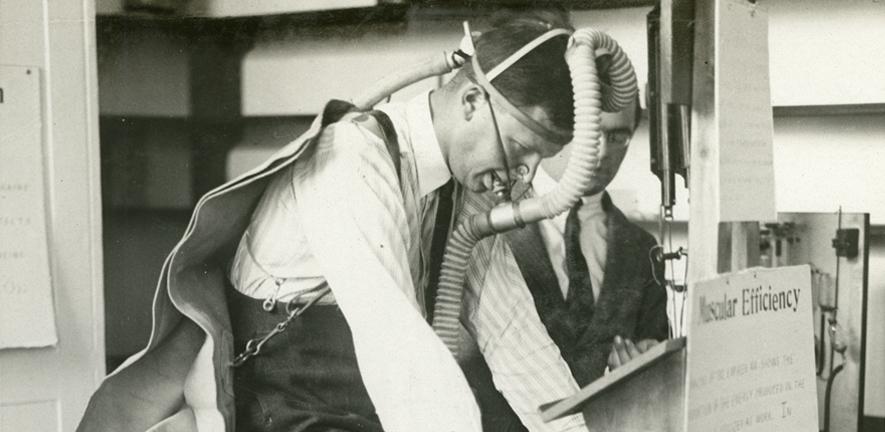
One of the first arrivals in the new Sir William Dunn Institute of Biochemistry, now known as the Hopkins Building, was the Hungarian physiologist Albert Szent-Györgyi, who came in 1924 to take up a Rockefeller Fellowship offered to him by Frederick Gowland Hopkins. Szent-Györgyi completed his PhD in 1927, having isolated 'hexuronic acid' from adrenal gland tissue. He then returned to Hungary to a position at the University of Szeged where, in 1930 collaborating with Joseph Svirbely, he showed that 'hexuronic acid' was actually vitamin C, the L-enantiomer of ascorbic acid. In 1937 Szent-Györgyi won the Nobel Prize in Medicine for the discovery of vitamin C and for his work on the citric acid cycle. During the Second World War Szent-Györgyi fought with the resistance movement in Hungary, afterwards entering politics before eventually emigrating to the United States.
From the early 1920s John Desmond Bernal had been working with Sir William Bragg developing X-ray crystallography. During his time in Cambridge Bernal had close links with Hopkins' laboratory, working on the structures of vitamin B1, vitamin D2, sterols and tobacco mosaic virus. With Dorothy Hodgkin, in 1934, he generated the first X-ray pictures of hydrated protein crystals. Bernal was, of course, prominent in political life, a sometime member of the Communist Party and active in the Association of Scientific Workers. Similarly, Dorothy Hodgkin took part in the 1933 Armistice Day march, with Joseph Needham, to protest against war and the militarisation of research. They were reported by the London Evening Standard as "hooligans" after having eggs thrown at them by members of the Cambridge University Conservative Association.
In 1927 the Dunn Nutritional Laboratory, now the MRC Mitochondrial Biology Unit, was set up as an off-shoot of Biochemistry.
In 1931 Malcolm Dixon, David Keilin (who succeeded George Henry Falkiner Nuttall as Professor and Director of the Molteno Institute; now the Molteno Building and part of the Department of Pathology) and Robin Hill obtained the first absorbance spectrum of isolated cytochrome c. Much later, in 1960, Hill was to describe the energy profile of photosynthesis in the form of his Z scheme.
The academic year 1934-1935 saw the introduction of Part I Biochemistry, and in 1938 Robert Alexander McCance became the first Reader in Clinical Biochemistry. McCance was a founding member of the Nutrition Society, serving on the Editorial Board.
